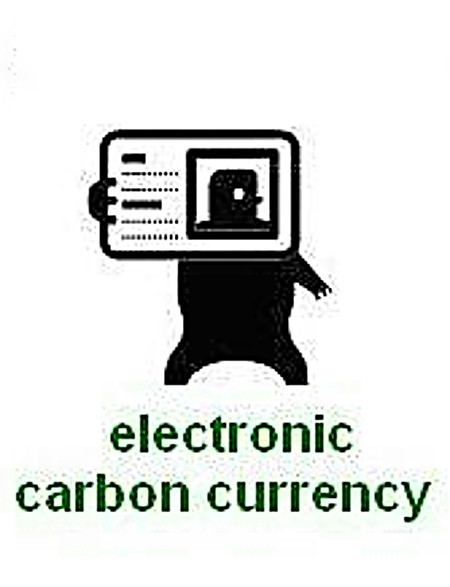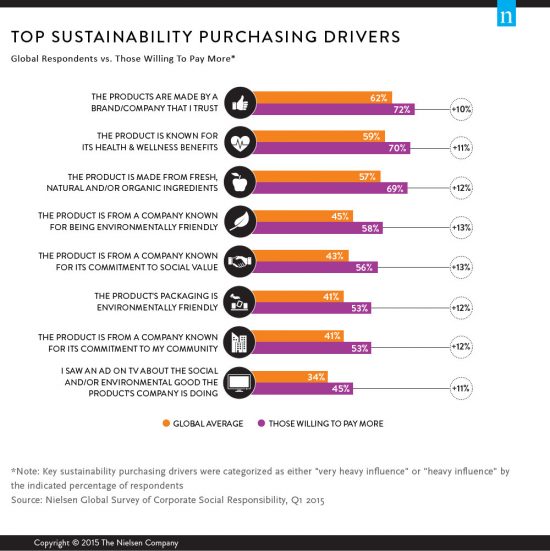September 23, 2017 – There is a generational shift going on that is not reflected in the dystopian politics we see in the United States these days. The vast majority of young people see green, sustainable, and socially responsible as critical values in their purchasing decisions according to a Nielsen global study done in 2015. It concludes that Generation Z, those age 15 to 20, is committed to a future where pocketbook sacrifices are perfectly acceptable if it means fighting global warming successfully.
To get a sense of just how more committed Generation Z is to sustainability than the general population, take a look at the chart below. It measures top sustainability purchasing drivers.
When I see this commitment to paying more for “green” and “sustainability” I am encouraged. But what troubles me is the lack of discipline in being able to measure green and sustainable value. To me, it makes sense for us to have tools to make selecting green and sustainable choices easier. But what tools are out there to help product and service creators, and consumers measure their environmental impact?
Think about it. We contribute to greenhouse gas emissions (GHGs) with every buying decision we make. Buy a Starbucks or Tim Horton’s coffee. What’s the GHG value of that transaction? Fill your gas tank, purchase new clothes, book a flight – each transaction produces GHG values.
We can go online and try and use a carbon calculator and begin to figure out our lifestyle impacts on the environment, but accurate tracking of our GHG contributions is pretty difficult to do. One way that could make it a lot easier is to create a carbon currency.
Creating a Carbon Currency
A carbon currency would be an instrument focused on GHG reductions. It would derive its value based on a measure of the economic benefit derived from reductions. Initially, the government would issue every citizen an electronic wallet filled with carbon currency. The amount would vary, determined by age, profession, and other measurable attributes. Every transaction would have a local currency value as it does today, but it would also have an assigned carbon currency value based on GHG contributions.
The idea here is to alter human behaviour through better green lifestyle choices. The balance in carbon currency remaining in a person’s electronic wallet at the end of a specified period of time could be used to purchase green and sustainable units of value that could be applied to reforestation or other natural carbon sinks. As we adjusted our behaviour by making greener choices, the allotment of carbon currency in each allotted cycle would decrease.
Could this work?
Recently as I was working on ideas related to carbon pricing and how individuals could help governments tackle GHGs, it occurred to me that we really need a carbon guide similar to the nutrition information that appears on consumer packaging. In Canada, our government produces a national food guide designed to help us make good food choices.
We also regulate packaging on food products to see the content of what we eat. So when we buy boxes of crackers we can read the consumer information that tells us caloric unit value. We also can see vitamin content, and other ingredients. If a carbon value were applied in the same way as calorie units and shown on packaged consumables, then we would have the means to measure these products’ GHG contribution.
Now think about other consumables that aren’t food to which we also would want to assign carbon value. This presents a bit of a challenge. Here’s a partial list of the things many of us acquire in our daily lives:
- furniture
- appliances
- consumer electronics
- cars
- carpets
- clothes
- shoes
- books
- dishes
- cutlery
- pets
- pet food and pet products
- other household products
- lighting, heating, cooling, etc.
How do we measure the carbon currency value in all of these things?
That requires input from the manufacturers in the same way packaged food producers give us content information. Once we start putting carbon content values on everything, a carbon currency will become a powerful tool for altering behaviour and creating a greener, more sustainable future. That’s what Generation Z is prepared to pay more for, and that’s what all of us need to do to help them and the generations that follow them for the sake of the planet.










